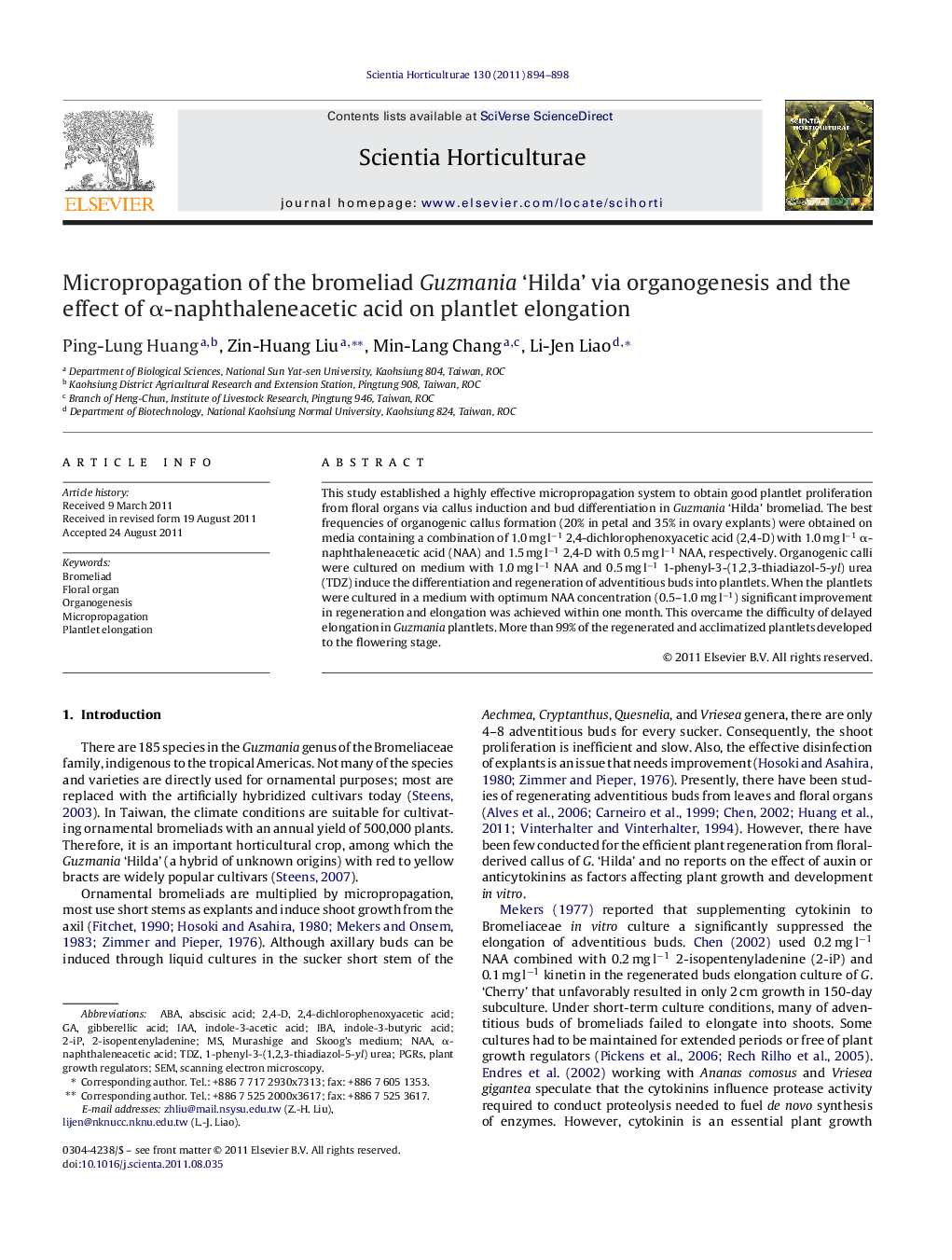| Article ID | Journal | Published Year | Pages | File Type |
|---|---|---|---|---|
| 4567902 | Scientia Horticulturae | 2011 | 5 Pages |
This study established a highly effective micropropagation system to obtain good plantlet proliferation from floral organs via callus induction and bud differentiation in Guzmania ‘Hilda’ bromeliad. The best frequencies of organogenic callus formation (20% in petal and 35% in ovary explants) were obtained on media containing a combination of 1.0 mg l−1 2,4-dichlorophenoxyacetic acid (2,4-D) with 1.0 mg l−1 α-naphthaleneacetic acid (NAA) and 1.5 mg l−1 2,4-D with 0.5 mg l−1 NAA, respectively. Organogenic calli were cultured on medium with 1.0 mg l−1 NAA and 0.5 mg l−1 1-phenyl-3-(1,2,3-thiadiazol-5-yl) urea (TDZ) induce the differentiation and regeneration of adventitious buds into plantlets. When the plantlets were cultured in a medium with optimum NAA concentration (0.5–1.0 mg l−1) significant improvement in regeneration and elongation was achieved within one month. This overcame the difficulty of delayed elongation in Guzmania plantlets. More than 99% of the regenerated and acclimatized plantlets developed to the flowering stage.
► We model a combined method which can promote propagation and elongation in vitro. ► An efficient micropropagation system depends on organogenic calli induction. ► Floral organs are considered to be the initial explants to decrease contamination. ► The organogenic calli maintain high regeneration ability more than two years. ► α-Naphthaleneacetic acid can facilitate the plantlets to elongate significantly.
